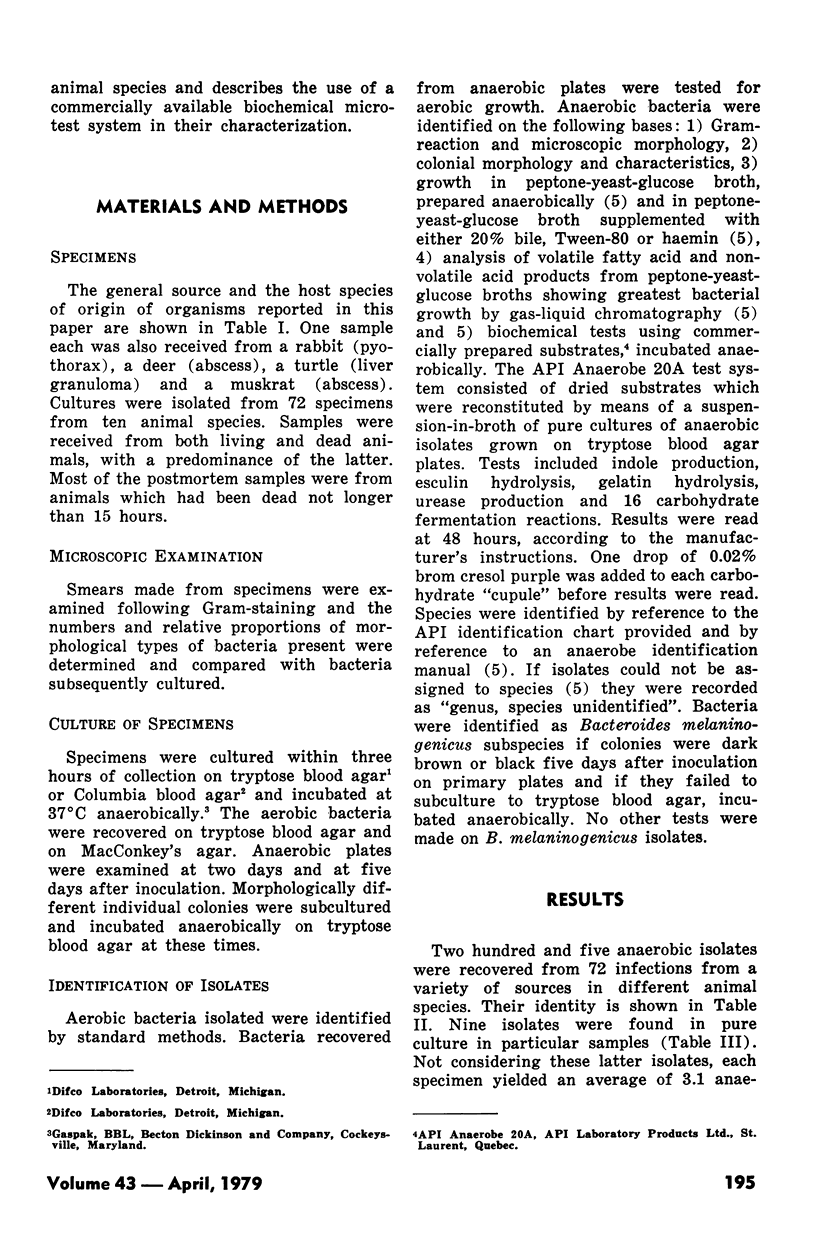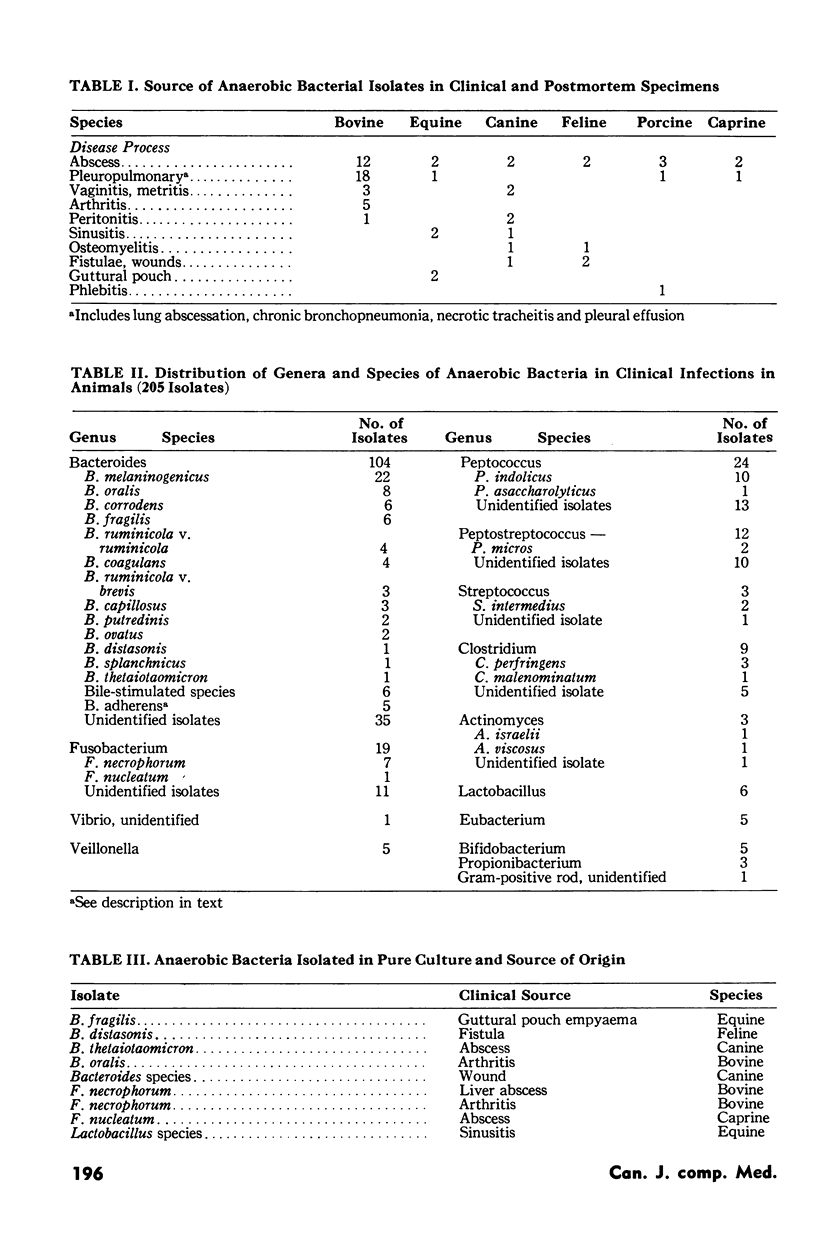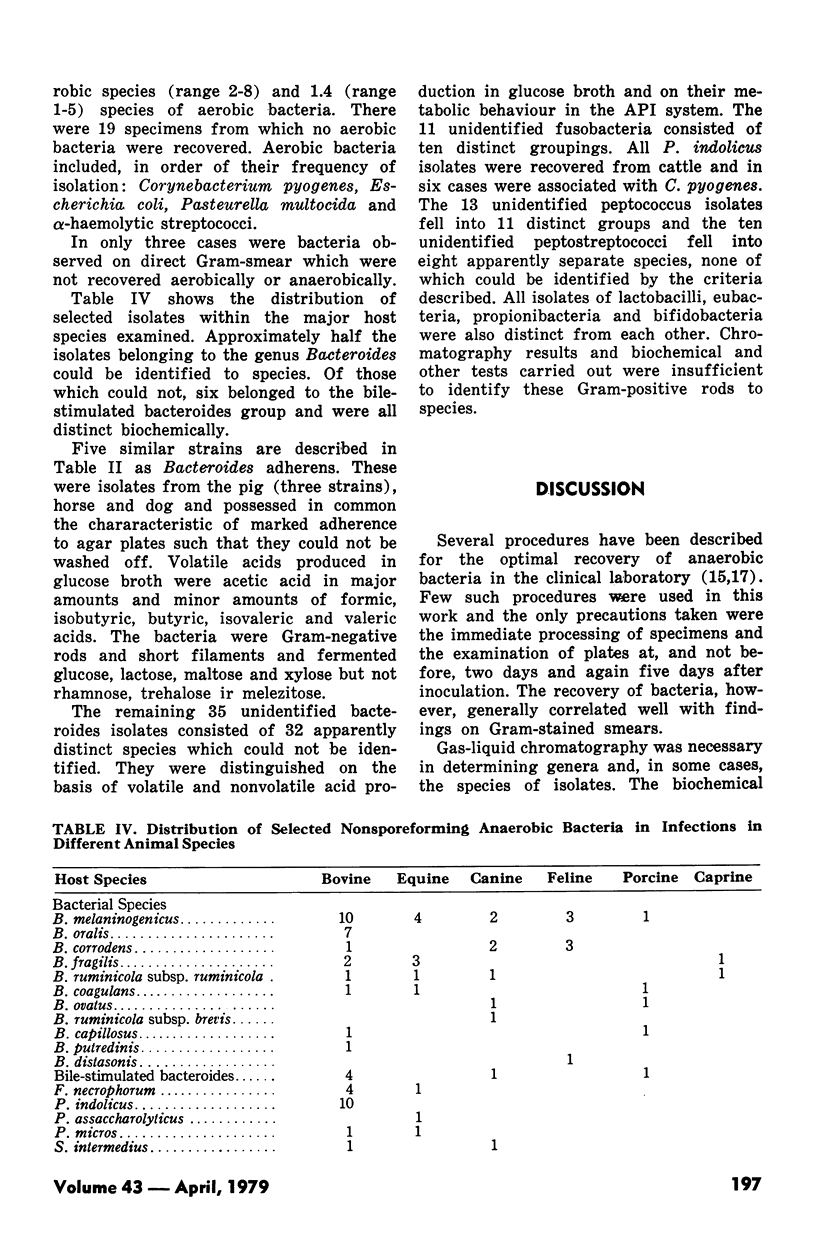Abstract
Over 200 anaerobic bacterial isolates were recovered in a veterinary diagnostic laboratory from nonspecific infectious disease from 72 specimens originating from ten animal species. The majority of isolates were nonsporeforming bacteria and about half were identified to species. Bacteroides species formed the major group and included B. oralis, B. fragilis, B. corrodens, B. ruminicola subspecies ruminicola, B. ruminicola subspecies brevis and various subspecies of B. melaninogenicus. Gram-positive anaerobic cocci constituted the next major group of isolates and the main species identified in cattle was Peptococcus indolicus. Clostridial species were uncommon. Nine specimens yielded a pure culture of an anaerobe and, in samples containing mixtures of bacterial species, each specimen yielded an average of 3.1 anaerobic and 1.4 aerobic bacterial species. The failure to identify many of the isolates is discussed.
Full text
PDF





Selected References
These references are in PubMed. This may not be the complete list of references from this article.
- Berg J. N., Loan R. W. Fusobacterium necrophorum and Bacteroides melaninogenicus as etiologic agents of foot rot in cattle. Am J Vet Res. 1975 Aug;36(08):1115–1122. [PubMed] [Google Scholar]
- Hansen S. L., Stewart B. J. Comparison of API and Minitek to Center for Disease Control methods for the biochemical characterization of anaerobes. J Clin Microbiol. 1976 Sep;4(3):227–231. doi: 10.1128/jcm.4.3.227-231.1976. [DOI] [PMC free article] [PubMed] [Google Scholar]
- Langworth B. F. Fusobacterium necrophorum: its characteristics and role as an animal pathogen. Bacteriol Rev. 1977 Jun;41(2):373–390. doi: 10.1128/br.41.2.373-390.1977. [DOI] [PMC free article] [PubMed] [Google Scholar]
- Martin W. J. Isolation and indentification of anaerobic bacteria in the clinical laboratory. A 2-year experience. Mayo Clin Proc. 1974 May;49(5):300–308. [PubMed] [Google Scholar]
- Moore H. B., Sutter V. L., Finegold S. M. Comparison of three procedures for biochemical testing of anaerobic bacteria. J Clin Microbiol. 1975 Jan;1(1):15–24. doi: 10.1128/jcm.1.1.15-24.1975. [DOI] [PMC free article] [PubMed] [Google Scholar]
- Moore W. E., Holdeman L. V. Human fecal flora: the normal flora of 20 Japanese-Hawaiians. Appl Microbiol. 1974 May;27(5):961–979. doi: 10.1128/am.27.5.961-979.1974. [DOI] [PMC free article] [PubMed] [Google Scholar]
- Onderdonk A. B., Kasper D. L., Cisneros R. L., Bartlett J. G. The capsular polysaccharide of Bacteroides fragilis as a virulence factor: comparison of the pathogenic potential of encapsulated and unencapsulated strains. J Infect Dis. 1977 Jul;136(1):82–89. doi: 10.1093/infdis/136.1.82. [DOI] [PubMed] [Google Scholar]
- Polk B. F., Kasper D. L. Bacteroides fragilis subspecies in clinical isolates. Ann Intern Med. 1977 May;86(5):569–571. doi: 10.7326/0003-4819-86-5-569. [DOI] [PubMed] [Google Scholar]
- Sorensen G. H. Studies on the occurrence of Peptococcus indolicus and Corynebacterium pyogenes in apparently healthy cattle. Acta Vet Scand. 1976;17(1):15–24. doi: 10.1186/BF03547939. [DOI] [PMC free article] [PubMed] [Google Scholar]
- Weber A., Schliesser T., Steiner G. Zum kulturellen Nachweis von anaeroben Kokken, insbesondere von Micrococcus indolicus in Milchsekreptproben von Rindern mit sogenannter Sommermastitis. Dtsch Tierarztl Wochenschr. 1977 May 5;84(5):165–167. [PubMed] [Google Scholar]
- Wren M. W., Baldwin A. W., Eldon C. P., Sanderson P. J. The anaerobic culture of clinical specimens: a 14-month study. J Med Microbiol. 1977 Feb;10(1):49–61. doi: 10.1099/00222615-10-1-49. [DOI] [PubMed] [Google Scholar]


